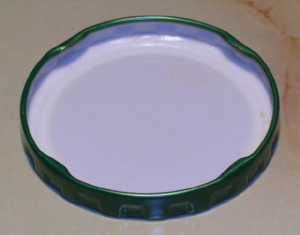
Hex Mayflies
Hexagenia limbata
The famous nocturnal Hex hatch of the Midwest (and a few other lucky locations) stirs to the surface mythically large brown trout that only touch streamers for the rest of the year.
Featured on the forum

Troutnut is a project started in 2003 by salmonid ecologist Jason "Troutnut" Neuswanger to help anglers and
fly tyers unabashedly embrace the entomological side of the sport. Learn more about Troutnut or
support the project for an enhanced experience here.


Agresens on Jun 17, 2018June 17th, 2018, 11:57 pm EDT
Two images - please help identify.
The NYMPH appears to be a Hendrickson?
The DUN was quite large. Seems like it had just hatched with malformed wings. A Drake?
Thanks
The NYMPH appears to be a Hendrickson?
The DUN was quite large. Seems like it had just hatched with malformed wings. A Drake?
Thanks
Taxon on Jun 18, 2018June 18th, 2018, 5:45 pm EDT
Hi August-
I believe (what you refer to as the dun) is actually a male imago of genus Isonychia
I also believe (what you refer to as a Hendrickson), which is a common name often used for Eastern Ephemerella, is probably of genus Drunella.
The next time you photograph a mayfly nymph, I suggest using a pickle jar lid, and filling it with enough water to completely cover the nymph. That way, the body appendages will stand out, as opposed to being all stuck together.

I believe (what you refer to as the dun) is actually a male imago of genus Isonychia
I also believe (what you refer to as a Hendrickson), which is a common name often used for Eastern Ephemerella, is probably of genus Drunella.
The next time you photograph a mayfly nymph, I suggest using a pickle jar lid, and filling it with enough water to completely cover the nymph. That way, the body appendages will stand out, as opposed to being all stuck together.

Agresens on Jun 23, 2018June 23rd, 2018, 1:50 am EDT
Thank you!
I'm packing my pickle jar lid now.
I'm packing my pickle jar lid now.
Konchu on Jun 27, 2018June 27th, 2018, 5:54 am EDT
The nymph looks like it might belong to the genus Maccaffertium (family Heptageniidae). Used to be in Stenonema.
Quick Reply
Related Discussions
Topic
Replies
Last Reply
8
Sep 21, 2009
by GONZO
by GONZO
10
Dec 18, 2013
by Brookyman
by Brookyman
3
Jul 15, 2019
by Tuckcast
by Tuckcast
4
Nov 28, 2007
by Martinlf
by Martinlf












